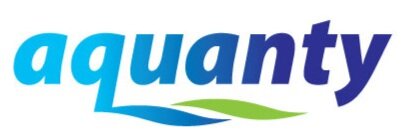New Commands to Report Water Table Depth/Elevation
This post introduces two new commands in HydroGeoSphere (Revision 2270): Report water table at xy and Report water table at node. These commands allow you to report the water table at a specific location, either by node or XY coordinates. When using these commands, HydroGeoSphere identifies the nearest vertical column of nodes and interpolates pressure head values to report the first location where the pressure head is 0, which is particularly useful for detecting perched water tables. These commands provide a simple and efficient way to track water table elevations at specific points in your model.
Figure 1: Report Water Table command entries from the Reference Manual (page 271)
This weeks post is a quick one to highlight two new commands that have been included in the June 2021 release of HydroGeoSphere (Revision 2270). The commands in question are Report water table at xy and Report water table at node.
It’s immediately clear that these commands are used to report the water table at a given node or XY location. Let’s take a closer look at how these commands are applied, the resulting output and some potential pitfalls of applying these commands. As usual, an example problem is referenced throughout this post.
Download the example problem (Abdul_WaterTable) here: Abdul_WaterTable.zip
Figure 1 shows the Reference Manual entries for these new commands, and as you can see they are very easy to apply. To report the water table simply apply the command in your *.grok file, followed by a descriptive name to be used in the output file (e.g. “Point 1”, followed by the node number OR the X/Y coordinates of the location in question.
Please note that a Z-coordinate is not required here, as all nodes in a vertical column will typically share the same water elevation. However, there may be some cases where two water tables would be present at the same location (i.e. with a perched water table). To understand what happens in this situation it’s helpful to know exactly how this command works.
Figure 2: Application of `Report water table’ commands in the .grok file
When using these commands HGS will identify the nearest vertical column of nodes and begins interpolating the pressure head values between nodes starting from the top and working downward, and will report the first location where the pressure head is 0. Therefore, if there is a perched water table the Report water table commands will identify the upper water table.
Now let’s see an example of these commands in action. Using the Abdul_WaterTable example problem (download link above), we can see both versions of the command applied at the bottom of the *.grok file (see Figure 2 below). Note that both versions of the command are included, although the Report water table at node versions have been commented out to avoid repetition. Either set of command would result in the same output (although with modified file names, i.e. Point1 vs. Point3).
When the model is run the resulting water table elevations are written to the files ‘abdul_WaterTableo.water_table.Point1.dat’ and ‘abdul_WaterTableo.water_table.Point2.dat’, corresponding to observation points 1 and 2 (see Figure 3 below).
If we open ‘abdul_WaterTableo.water_table.Point1.dat’ we can see that the resulting output includes both the depth to water table (based on the surface layer elevation) and the overall water table elevation at every timestep:
Figure 3: Location of ‘Abdul_WaterTable’ observation points
Figure 4: “Report water table at xy” output file





